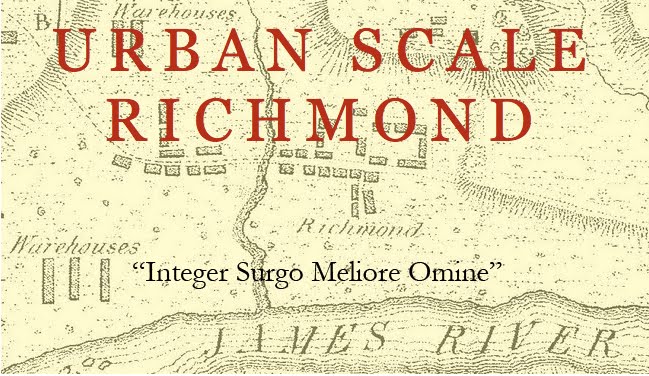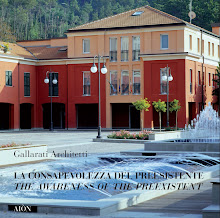Richmond's City Docks, completed between 1816 and 1819, were a significant feat of engineering that provided the city with a large body of quiet water unaffected by tides, high water, and most storms, and that was accessible by ocean-going boats.
This important civic improvement helped Richmond maintain its place as one of the world's sources of fine flour and tobacco. Both were renowned for their quality and shipped around the world. Part of the City Docks still survive near the Great Ship Lock Park along the route of the present-day Kanawha Canal tour boats.
 |
|
The
Old Dock at Liverpool (1709-1715), shown in 1723, protected from the tides by wooden gates, was built to the designs of engineer Thomas
Steers. It was the first commercial dock [http://en.wikipedia.org/wiki/Old_Dock].
|
 |
|
Detail of 1738 plan of Town Dock,
Boston, Mass., Boston Public Library.
|
 |
|
https://en.wikipedia.org/wiki/Port_of_Hull# Maps
showing the Old Dock in the city of Hull (1774) and later interconnected docks
opening off the River Humber.
|
 |
|
West India Docks: this engraving
was published as Plate 92 of Microcosm of London (1810). It shows one
side of one of the three large docks, lined with ships and five-story
warehouses [http://en.wikipedia.org/wiki/West_India_Docks].
|
The Richmond Dock Company
As Richmond’s position as a center for manufacturing and trade improved in late eighteenth century, conditions for shipping and warehousing goods remained primitive. At early eighteenth-century Richmond, a miniscule port in comparison to Boston, small boats had long been accommodated at the well-known Rock Landing, located on the upstream side of Shockoe Creek just below the falls. Boats probably also could land behind the shelter of Chapel Island in the old channel of Shockoe Creek, which was reserved for the use of citizens as the “commons of the city.” The principal deep-water port was at Rocketts, immediately downstream from the city.
Richmond’s smooth functioning as a port was foremost in the mind of the Virginia General Assembly when it adjusted and expanded the rules governing the trustees of the town in 1773. The first duty of the trustees was “to meet as often as they shall think necessary for appointing a public quay, and such places upon the river for public landings as they shall think most convenient, and if the same shall be necessary, shall direct the making of wharfs and cranes at such public landings for the public use” [An Act, to establish and enlarge the power of the trustees of the town of Richmond, in the county of Henrico, and for other purposes. March, 1773, Ch. 6, 8 Stat. Lar. 65.5.]
In 1780, the same patterns held: access to
the Rock Landing, referred to variously as the “Shockoe,”
“upper,” or “Warehouse”
Landing, “much
obstructed of late by freshes, and by the natural course of Shockoe Creek being
altered” by
banks of sand “which, if not quickly removed, may render the navigation to
the upper landing useless” for the profit of both the citizens of
the town and the agricultural producers of the back country, was to be reopened
by a company authorized to raise private investment for that purpose [An Act,
for locating the Publick Squares, to enlarge the Town of Richmond, and for
other purposes. May, 1780].
The James River Company, chartered in 1785, ensured that tobacco, iron, coal, wheat, stone, lumber, and pork from the plantations to the west could be brought by boat directly into the heart of the city at the Great Basin. The canal permitted direct transport around the Falls of the James River for the special cargo boats called "batteaux". All produce that was brought around the falls was unloaded here and placed in warehouses, from which it could be taken by wagon through the city to the wharves downstream where larger ships could be tied up.
Addition of a great canal basin in 1793-95 had not only provided a location for shipping warehouses and wharves, but also supplied water to what would soon become a series of huge merchant flour and lumber mills, beginning with the opening of the massive Haxall Flour Mills in 1798. These produced fine white flour transported around the world as a result of an increase in wheat production in competition with tobacco in the areas west of Richmond.
In 1816, flush economic conditions at the close of the war with Great Britain encouraged the city to consider improving access by sea-going ships, most of which at this time anchored just downstream at the city seagoing port of Rockets. Direct transfer by water of the city’s flour and tobacco products could only be assured by the creation of an artificial harbor or wet dock.
The new City Dock was laid out by an expert in canal
construction who was personally familiar with the latest developments in
British dock design. It was designed by the Board of Public Works’ Principal Civil
Engineer Loammi Baldwin, Jr. (1780-1838). Baldwin was the son of Loammi Baldwin
(1744-1807), an important early figure in American civil engineering and
especially canal building. He designed and built the Middlesex Canal in
Massachusetts between 1794 and 1803. Loammi Baldwin, Jr. assisted his father
with the Middlesex Canal and soon after 1807 traveled to England to view public
projects. He was active in Virginia between 1817 and 1820. The plan seen here
was prepared by Baldwin in 1818 for the Board of Public Works shows the dock
before construction began. The dock
consisted of two basins fed by a “feeder” from upstream and a canal to the south
that entered the river by a series of locks. The was created by placing earthen
embankments around the former route of Shockoe Creek on the north side of a
strip of land known as Chapel Island, but originally connected at it west end
to the north bank of the river. Three
basins, Upper, Middle, and Lower, were extended to the east and west with canals
connecting to the Haxall Mill race above and the James River Below. A great
deal of fill was required to extend the main dock basins out into the river in
front of the old Rock Landing.
The state assumed control of the James River Company in 1820. The James River and Kanawha Company, organized in 1835 to connect the trans-Appalachian West with the Chesapeake Bay by means of a canal, took control of the canal above the falls at Richmond. The canal was extended to Lynchburg in 1840 and the Valley of Virginia in 1851. The canal scheme was under constant pressure to expand the access for both shipping and water power below the falls. The Virginia Board of Public Works undertook a study for another unexecuted enlargement of the docks in 1836 to accommodate as many as 120 ships in a great new dock beside Mayos Bridge. This dock, protected by an earthen wall, was kept filled by ponding the entire river behind a dam that extended across the river parallel to 16th Street. A wide ship canal led from the south side of the pond to enter the river at Warwick, where the river allowed passage for ships of greater size. The plan for a ship canal was never executed.
The canal was enlarged in several stages, from an average initial depth of 3 1/2 feet and width of 40 feet. The canal as far as Lynchburg and including the portion running through the city, was expanded in the late 1830s to five feet in depth and fifty feet in width. Water management and sufficient supply remained a contentious factor between the canal company and the manufacturers who leased the rights [Michael Raber et al., Historical and Archeaological Assessment, Tredegar Iron Works Site, Richmond Virginia, report for the Valentine Museum and Ethyl Corp, 1992].
In
1841, the canal company purchased the Richmond Dock Company’s property. New plans drawn up
in 1841 called for a new canal to run from the arsenal along a new embankment
at the river edge, bypassing the old basin and suggesting that the north side
of the river would be extended far enough to the south to encompass Mayo’s
Island. This was never executed.
 |
|
Map
of Part of the City of Richmond showing the James River and Kanawha Canal, 1841, Board of Public Works, Library of Virginia. A
proposed route for a branch of the canal is through Mayos Island.
|
 |
|
Map showing the fully developed City
Dock complex of pools, locks, drawbridges, and basins just before the Civil War
[Adams, I.H. Map of the City of Richmond, Virginia, 1858, published 1864].
|
 |
|
Libby Prison (one of Enders
Warehouses) and the City Dock from Benson J. Lossing. Harper’s Encyclopedia of the United States,
vol. 7, 1912.
|
 |
| Enders Warehouses in the City Dock after the Civil War. |
 |
| This view from Harper’s Magazine in 1863, shows the dramatic slowdown in traffic during the war years. Mayos Bridge and the mills are seen in the distance. |
 |
|
Detail, Beers Map of Richmond,
1876. Mayo’s
Warehouse is seen here next to the railroad depot.
|
 |
|
The City Dock in the late
nineteenth century, showing a sea-going ship and the revolving bridge that
carried 17th Street over the canal [City on the James, 1893].
|
With the closure of the canal in 1878, the City Dock was acquired by the Richmond and Alleghany Railroad. The railroad later sold it to the William R. Trigg Company, which developed a ship-building industry along the south side of the dock on Chapel Island. The Trigg Compnay specialized in the building of boats for industry and of torpedo boats and destroyers for the government, which they launched from the side into the canal. The company employed two thousand workers and occupied as much as a mile of the ship canal. After the death of William R. Trigg in 1902, with three boats under contract, the business failed and the company went into receivership. The city acquired the dock facilities east of Seventeenth Street in 1912, built new warehouses, and attempted unsuccessfully to re-establish the city as a major port [Mordecai, John Brooke in Richmond, Capital of Virginia, 1938, 274-275, 283-284].
 |
|
Launching of a destroyer at
the Trigg Shipyards [VCU Library]. The launching of the USS Shubrick in 1899
brought President William McKinley to Richmond.
|



























This comment has been removed by a blog administrator.
ReplyDeleteAgree with above comment.
ReplyDelete